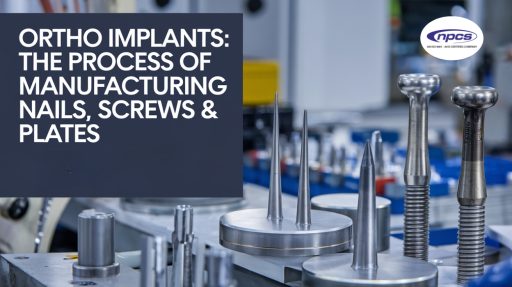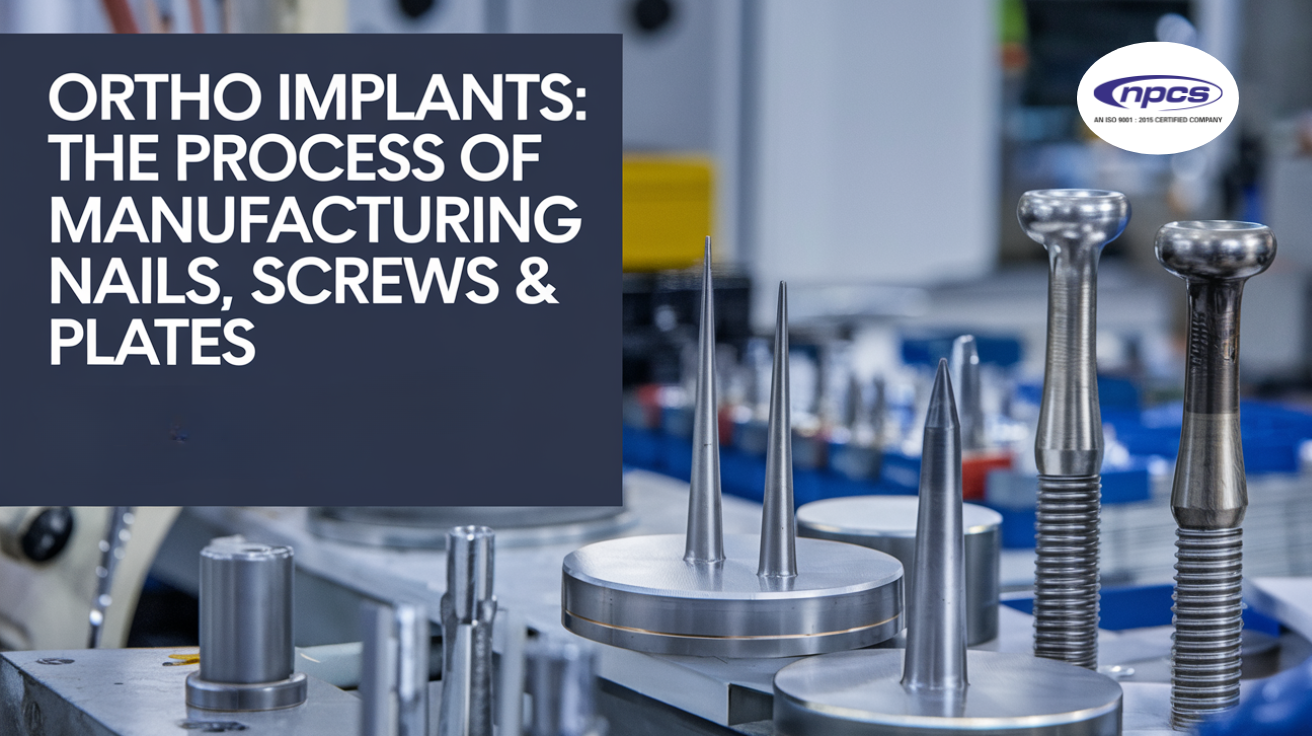Ortho implants that consist of nails, screws and plates enable patients to heal and recover from bone fractures and deformities and joint difficulties. The implants maintain support to wounded bones while helping them heal while providing essential stability to maintain proper alignment. Very precise manufacturing of orthopedic implants demands strict regulatory conditions alongside high-quality control methods to achieve both effectiveness and security.
This article outlines the fundamental sequence by which medical practitioners and engineers make orthopedic implants including nails screws along with plates and demonstrates their meaning to patient care. This is also helpful for those looking to start Orthopedic implants business.
Standard in Ortho Implants
When considering the human body, strength and design are fundamental elements in the development of orthopedic implants- notwithstanding pressures and stresses. An implant should be able to handle someone’s weight and movement without requiring masses of surface accessible for it, must sustain repeated stresses like weight-bearing and movement yet is still biocompatible whether it is a fracture nail or a plate holding disaster over damaged bones. Otherwise, it will fail and entail a very out-of-this-world experience for a patient-infection, bone misalignments, and too much for a lifetime suffering.
Manufacturing such implants calls for meticulous attention to detail to guarantee that they can satisfy medical and functional needs. Every element, from material choice to post-production testing, is vital in assuring that the implants will be suitable for their intended uses and will thereby help to guarantee optimum recovery in patients.
Material Choice for Ortho Implants
Strength, corrosion resistance, and most significantly, biocompatibility must all be met by the chosen orthopedic implant material. For nails, screws, and plates nowadays, titanium and stainless steel are both the materials of choice. In terms of mechanical characteristics, they are outstanding; they can also survive the demanding environments inside the human body.
Another rather often utilized metallic substance for orthopedic implants is stainless steel. It has low cost, great corrosion resistance capacity, and strength. Massachusetts holds it, but it is not as light as titanium and is not as biocompatible, therefore it is primarily utilized for short-term implants or those needing greater strength because to that insecurity Massachusetts has.
Sometimes implants are covered with bioactive materials such as hydroxyapatite in order to enhance osseointegration and stimulate bone development. By helping the bone bind more successfully with the implant, these coatings serve to lower the chance of implant failure or complications.
Visit this Page for More Information: Start a Business in Mechanical and Engineering Goods Industry
Design & Engineering of Plates, Screws and Nails
Therefore, the design of orthopedic implants is well designed to minimize the sufferings and difficulties to the patient while nevertheless allowing support and stability. An orthopedic surgeon would point out the design elements—such as form, size, and utility—that depend on the kind of damage or nature of the operation-patient feedback is usually considered.
Orthopedic nails, including intramedullary (IM) nails, are meant for implantation into the marrow canal of long bones, say the femurs or tibia. These nails are crucial for the healing of broken bones and for allowing their alignment and stability to help them to be healed. When constructing nails, one must consider design elements like strength, resisting rotating forces, and simplicity of insertion.
Usually fastened screws to shattered bones, plates are flat tools used for stabilization. Their forms and sizes range from locking plates to reconstruction plates to compression plates. The design of the plate must be such that it permits exact placement and maximal stability at the same time with a minimal possibility of infection or rejection.
Production Method: Accuracy and Workmanship
The manufacturing of orthopedic implants requires specialized production tools together with multiple complicated machining procedures. Exact alignment to structural integrity and thread patterns and measurements defines the building process for every implant. The standard production method includes these steps:
forging or casting
Many orthopedic implants are created from raw materials cast or forged to match a certain form. For example, titanium bars or stainless steel blanks heated under great pressure shape into the initial form of nails, screws, or plates. This method lets the maker build robust, homogeneous constructions with least waste.
machining
Machining begins right after the body form has been established. The implants are best refined and sized to their final dimensions using CNC machines. While cutting of the threads occurs at this stage in the case of screws, final effective molding to the correct shape of the bone takes place in the case of plates. Machining guarantees sufficient surface polish to be smooth and free of any flaws that cause discomfort and/or problems.
Surface Approach
Surface treatment techniques used on orthopedic implants after machining would help to increase their corrosion resistance and biocompatibility. Anodizing titanium or passivation stainless steel generates protective oxide coatings that help the implant withstand body fluids and promote healing. Extra bioactive coatings were sometimes used to help with better integration with the surrounding bone tissue and bone development.
Treatment by Heat
Heat treatment is one of the essential procedures to maximize the mechanical characteristics of the implant for titanium and stainless steel. In this case, the implant is set at a certain temperature and fast chilled for strength and hardness. Heat treatment guarantees that implants can withstand everyday activities and extends their lifetime.
Sanitation
Following their whole manufacturing, the implants are sterilized to remove all traces of germs and pollutants. Mostly recommended techniques to find implants suitable for medical usage are autoclaving or gas sterilization. This stage is important to prevent any infections later on while the implant is being placed into the patient’s body.
Monitoring Quality and Testing
The orthopedic implant-making process revolves much on quality control. The implants undergo a thorough testing program to guarantee their compliance to performance criteria and safety regulations.
Every implant should be able to be operated with considering the pressures it will come across in the body. Tensile strength, shear strength, and fatigue resistance are among the tests carried out to evaluate the performance of the implant under loads.
Orthopedic implants need very exacting accuracy. Any departure from the required dimensions might result in either inadequate fitment or failure. Every implant made guarantees that every dimension falls within the prescribed tolerances by means of dimensional checks.
The implant has to also be tested for biocompatibility to see whether it can merge with human bone and tissues without causing any side effects. For any further difficulties developing and for the assurance the implant will not be rejected by the body, biocompatibility testing are very vital.
Approval and Certification for Regulation
Orthopedic implants have to satisfy their regulatory criteria before being marketed and used in medical operations. Manufacturers must provide very comprehensive information on the design, production technique, and testing of orthopedic implants according to agencies . The Food and Drug Administration (FDA) of the United States and European Medicines Agency (EMA).
Conclusion: Orthopedic Implants and the Future
Combining modern materials, technology, and a strict quality process. The exact production process of orthopedic implants—which include nails, screws, and plates—is extremely specialized and exact. The design and manufacturing possibilities of such devices will continue to highlight advantages for.
For medical sector players—including orthopedic implants—NIIR offers commercial solutions and professional advice. By guiding our customers toward innovative production processes, materials, or regulatory compliance, we keep them ahead in the medical-tools industry. Contact us now that you are aware of our help in the development of dependable, premium orthopedic implants.







